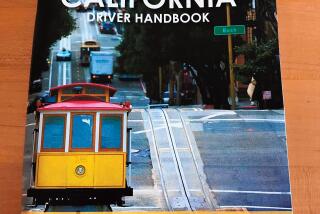Older Motorist Has a Complaint to File
- Share via
Question: I have a 1989 Cadillac Seville that has been a problem. It has a terrible glare from the dashboard that blinds me. I called Cadillac, and they told me to see the dealer. The service manager at the dealer made a crude joke about my age, saying he wasn’t a Medicare provider. Where are you supposed to go when you have a complaint?
--M. W. B.
Answer: The treatment of older motorists by many dealers, service managers and their mechanics is an absolute disgrace. I receive an abundance of mail from older motorists who must depend on older cars for vital transportation but who cannot obtain honest and reasonable automobile service.
Their fate is, rather, to be deceived, humiliated and cheated by incompetent mechanics who think the elderly are easy prey. It is even more outrageous that the insulting treatment you received should come from a General Motors dealer, because older motorists are American car manufacturer’s best customers.
There is one organization that undoubtedly would like to hear your story: the Center for Auto Safety, a Ralph Nader organization. The center is not directly concerned with rude mechanics, but it does compile data bases of motorists’ problems. Your problem with glare is a well-recognized shortcoming of many GM cars.
The center has been effective in prompting car recalls and in legislation intended to improve the reliability and safety of foreign and domestic cars. Most recently, for example, the center won an order forcing the federal government to release information it collected on the automobile tire ratings from manufacturers.
You can write to it at 2001 S Street N.W., Suite 410, Washington D.C. 20009. You can also report auto safety defects to the National Highway Traffic Safety Administration at (800) 424-9393. The Federal Trade Commission handles reports of nonsafety defects by mail. The address is Correspondence Branch, Federal Trade Commission, Washington D.C. 20580.
Q: I am confused about the paraffin or wax content of oils. I was told by a mechanic to avoid mixing paraffin and nonparaffin oils, but how am I supposed to know which ones are which?
--A. N.
A: All crude used to make motor oil is paraffin-based, but the paraffin is removed through the refining process. Any crude that is not paraffin-based is not thermally stable and has substandard lubricating properties. These oils are used for hydraulic fluids.
A lot of promotion is made about crude oil from Pennsylvania, but only 7% of crude used for motor oils comes from that state. The majority of it is extracted in Texas or in foreign nations. The key attribute that the motor oil refiner looks for in a crude is low sulfur content. That rules out high-sulfur crude from Alaska.
Paraffin-based crude is subjected to a dewaxing process at the refinery, which in part extracts wax through the use of solvents. By the end, the resulting motor oil is relatively free of wax.
Finally, a number of additives are put into the oil, including pour point depressants to prevent the oil from congealing from any remaining wax, rust inhibitors, detergents, foam inhibitors, viscosity index improvers, friction modifiers and dispersants.
One motor oil that is not paraffin-based is a new synthetic of organic molecule chains that resemble natural petroleum oils.
Whatever the chemical base of the motor oil you are considering, the most important aspect is the service rating by the American Petroleum Institute. SG is the highest.







